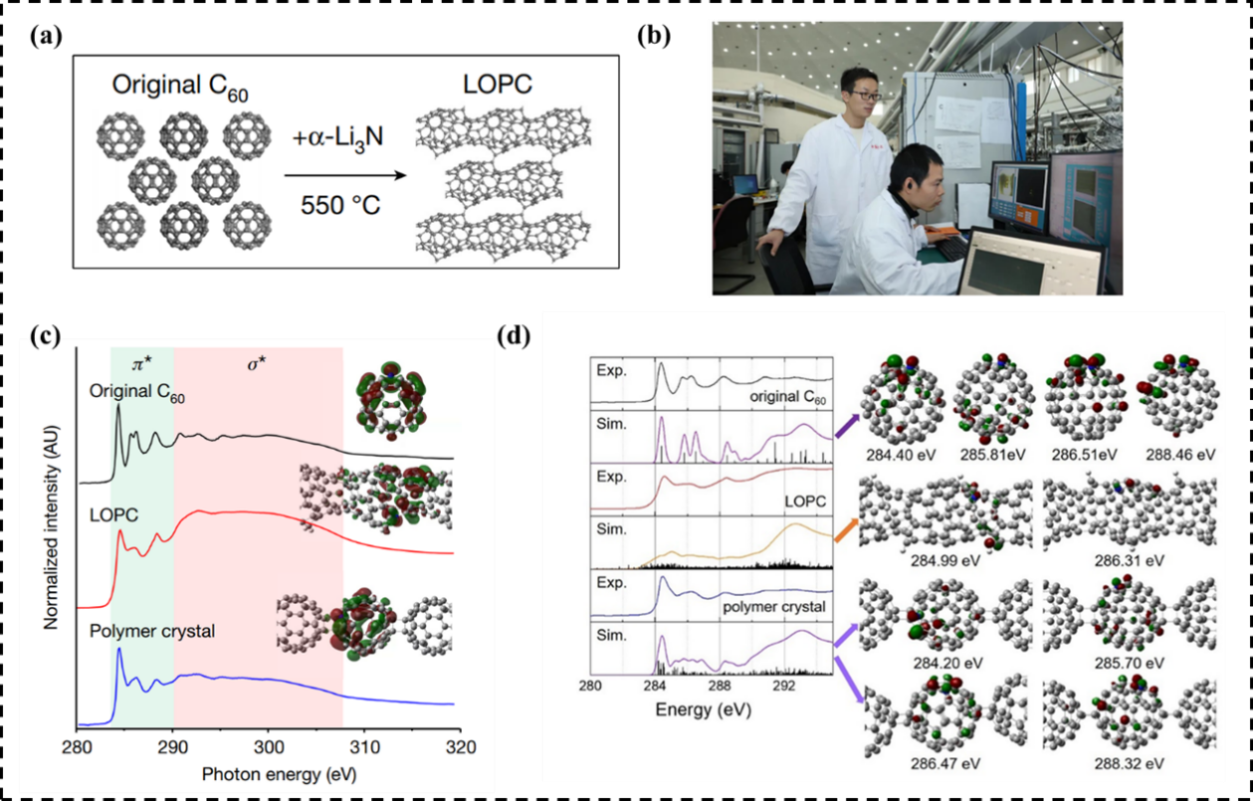Long-range ordered porous carbons produced from C60
The most renowned forms of carbon include graphite and diamond, yet there exist other more exotic nanoscale carbon allotropes. These encompass graphene and fullerenes, which are sp²-hybridized carbon structures with zero (flat) or positive (spherical) curvature. Recent advances in carbon materials research suggest that starting from well-defined nanostructures like fullerenes, novel carbon-based crystalline materials with unique properties and application potential can be developed. However, existing synthesis methods—such as high-temperature/high-pressure conditions or micro-scale techniques like UV/electron-beam irradiation—typically yield low quantities of mixed-phase products. This makes it challenging to obtain carbon-based crystals with well-defined structures and tunable properties, hindering comprehensive characterization and practical applications.
To address this, a team led by Prof. Zhu Yanwu at the University of Science and Technology of China (USTC), collaborating with Prof. Rodney S. Ruoff from the Institute for Basic Science (IBS) in South Korea, developed a breakthrough method. By injecting lithium nitride (Li₃N) into C₆₀ fullerene molecular crystals, they transformed face-centered cubic (FCC) C₆₀ crystals into polymer crystals and long-range ordered porous carbon (LOPC) crystals under ambient pressure at 440–600°C (Fig. 1a). This scalable gram-level synthesis enables atomic-scale control over C₆₀ molecular interfaces, offering a Lego-like modular approach for designing carbon-based crystalline materials.
During the study, as shown in Fig. 1b, the team utilized synchrotron soft X-ray absorption spectroscopy (XAS) at the Hefei Light Source Soft X-ray Magnetic Circular Dichroism Station (BL12B) to characterize LOPC’s electronic structure. Since carbon contamination on optical elements severely distorts C K-edge spectral signals in the soft X-ray range, beamline scientists employed an advanced in-situ cleaning protocol during experimental preparation to suppress contamination effects, thereby obtaining high signal-to-noise C K-edge XAS spectra. Fig. 1c presents the C K-edge XAS spectra, revealing that compared to C₆₀ molecular crystals and C₆₀ polymer crystals, LOPC exhibits a weaker and broader πpeak. This indicates complex C 1s→πenergy transitions in LOPC, distinct from the well-defined transitions in C₆₀. The inset in Fig. 1c displays the orbital distribution of excited atoms (marked in blue), showing significant contributions from LOPC’s neck regions, whereas C₆₀ polymer crystals primarily involve cage orbitals with minimal contributions from inter-cage sp³ bonds. Fig. 1d further validates these findings through spectral fitting of C₆₀ molecular crystals, LOPC crystals, and C₆₀ polymer crystals. This research advances our understanding of synthesizing novel carbon-based crystals. The findings were published in the internationally renowned journal Nature under the title Long-range ordered porous carbons produced from C₆₀

Figure 1. Structural and spectroscopic characterization of LOPC synthesis.
(a) Synthesis schematic of long-range ordered porous carbon (LOPC) crystals.
(b) Synchrotron soft X-ray absorption spectroscopy (XAS) data collection at Hefei Light Source BL12B beamline.
(c) Experimental C K-edge XAS spectra comparison.
(d) Simulated spectral deconvolution of C K-edge XAS data
Back
